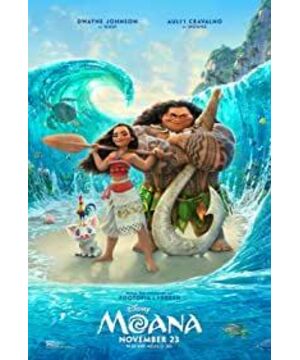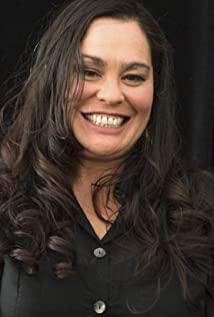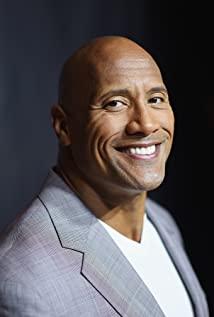In late 2016, when I was sitting in a movie theater watching the movie "Pocahontas", I made up my mind to write a review of it. That was the first year when I first peeked into matriarchy, and I instinctively felt that the story in it resonated with the idea of matriarchy, but my understanding of matriarchy was very shallow at that time. So while I'd love to write a review for it, I've never been able to.
Born out of Polynesian mythology (but heavily adapted), Pocahontas opens with the following story:
When Chaos first opened, the world was an ocean until it appeared on Te Fiti. Te Fiti's heart holds an unprecedented life-creating energy, which she generously shares with the world and then falls into a deep sleep. Over time, some people began to search for the Heart of Te Fiti, believing that if they could take the Heart of Te Fiti for themselves, they would gain the great power of the Creator. Until one day, the most daring of the group, crossed the vast ocean to capture the heart of Te Fiti. He is a demigod of wind and sea, a warrior, magician, and a shapeshifter who can change form at will with his magical fishhook, Maui. Here, Te Fiti is the creator of all things and has the power of creation, while Maui was originally powerless, and out of greed and jealousy for this power, the son does not steal maternal power. With the fall of maternal power and the rise of patriarchal power, the shadow of fear and violence began to hang over the world. Corresponding in mythology: Te Fiti, after losing his heart, began to disintegrate and collapse, and gave birth to darkness. For the next 1000 years, Te Ka (Demon of Earth and Fire) and other demons from the deep sea, hiding in the spreading darkness, chased away schools of fish, invaded island after island, and all would be bloodthirsty The claws devoured. On the other side, Maui was shot down from the air by Te Ka in the process of escaping, and has since disappeared without a trace. His magical fishhook and the heart of Te Fiti also sank into the sea with him.
The story begins 1,000 years later, when darkness spreads to the island where Moana lives, and their food starts to run short. Moana is the one chosen to return the heart of Te Fiti, she is summoned from the sea, here is similar to the Tenten girl in Japanese mythology who is the only one who can summon Amaterasu, and Moana is the only one People who communicate with the mother goddess Te Fiti - they are all women. In the film, Moana's grandmother is arranged as her leader. The image of the grandmother corresponds to the female leader of the matriarchal society. She spreads the myth of Te Fiti in the tribe, can talk to the ocean, and corresponds to the priest of the goddess. The son is the chief of the tribe, dealing with mundane things. However, here the mother is old and weak, and the son is rebellious and surly and no longer believes in the goddess, so he is a rebel. He also obstructed the growth of the next mother (Moana), prevented her from talking to the ocean (nature), wanted her to become the mother of the father, inherit the power of the tribe, continue to continue the patriarchy, and forbid her to go back to the origin, Lead the Horde back to their original form. But under the care of the mother of the previous generation, Moana finally discovered the fact that they were originally navigators (matriarchal society), and she decided to embark on a journey to return the heart of Te Fiti (let the power of creation return to its place, and the mother's right to return to its place). bits). Here Moana talks to her grandmother's soul during her journey to sea, which is one of the very classic priestess' abilities, encouraging her to cross the atoll when her grandmother protects her, and later when she loses herself after being defeated by Te Ka for the first time. She leads her back to her original heart and continues the journey of returning the heart of Te Fiti. It is worth pondering that the grandmother is still a husbandless image here. Correspondingly, it is Moana's mother, paternal mother, wife mother, and betraying mother. Appear. But she still kept the last trace of her mother's surname, so when Moana fled, she chose to help instead of reporting on Moana.
With the protection of the ocean, Moana found Maui. Maui is also a very classic image here. His experience of being abandoned by his mother (the son is not chosen by the mother, and he is executed) has also become his deepest fear. Even after possessing divine power, he has always used divine power to please humans, hoping to gain the love and worship of human beings. , until it causes disaster. He was originally a human but not a god and had no divine powers until the Mother God (Te Fiti) gave him divine powers to make him a demigod and also gave him a magic hook. He is also a figurative expression of the evil virtues of human beings in the patriarchal society, arrogant, vain, and extremely timid. His duties are similar to Moana's father, he is the "son" of the goddess, and performs the mundane duties on behalf of the goddess - to help and teach humans on behalf of the goddess. But in order to gain human appreciation (power), he chose to betray the mother goddess and steal the heart of Te Fiti. There is no obvious image of the traitorous mother here, mainly because Maui, as a demigod, is immortal, so there is no need for the traitorous mother to help him continue his bloodline (in the animation, he lived alone on an isolated island for 1,000 years; In mythology, Maui is not immortal, and steals the mother's heart in order to resist the law of life and death set by the mother. The role of humans here is similar to that of a traitorous mother, replacing the mother goddess to become the source of Maui's spiritual power, and instigating Maui to steal the heart of Te Fiti (the power of creation). Maui here is a very obvious sub-character with no energy, arrogant and ignorant but completely unable to withstand any minor setbacks, so even if he is a demigod with divine powers, it is Moana who is the leader of the task . With Moana's encouragement and support, he regained his confidence and mastered the magic hook again. This is also a foreshadowing for him to give up immediately after he was created by Te Ka again. His energy always comes from other mothers. When Moana encourages him, he is full of confidence; when Te Ka gives him setbacks, he immediately collapses. In the process of returning the heart of Te Fiti to Moana, he has always been a Servant, a follower.
The climax of this story is that when Moana finally climbed to the mother island after all the difficulties and dangers, she found that Te Fiti had disappeared. When she looked back at Te Ka, she found the spiral pattern on Te Ka's chest, and then she realized To Te Ka is Te Fiti. The mother goddess has always been two-faced, and Te Ka symbolizes the other side of the goddess - death, and when death is stripped away, the creative side - Te Fiti - is revealed. I personally think that the heart of Te Fiti is not actually the source of the mother goddess's power, but the mother goddess's wish for creation. The mother goddess who lost her creation will still be strong. As a demigod, Maui is not her opponent at all, just her Lost in self, only clinging to death but not creating life. In this section, Maui's hook is interrupted by Te Ka, which is actually a correspondence. The mother is always greater than the child. The mother can give strength to the child, and can also withdraw the strength. The mother can give birth to the child, and the mother can destroy the child. When Te Fiti found her heart, she was whole again, she was reborn from the ashes of the magma, and she brought life to the world again.
It is the mother who brings the hope of light and life, and it is the mother who gives birth to darkness, and the child is always just a servant.
View more about Moana reviews











